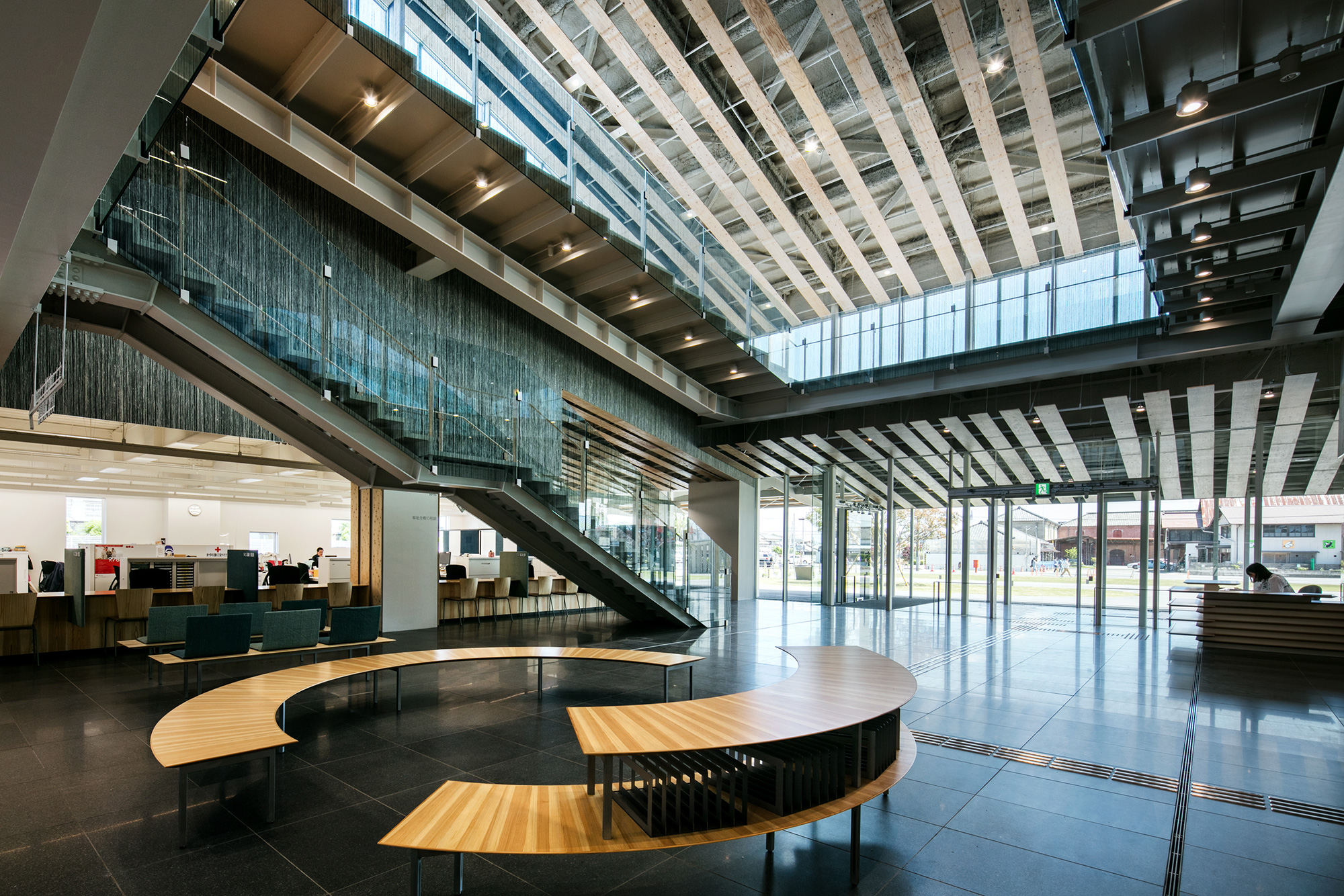Tomioka City Hall
Japan Gunma Tomioka
Kengo Kuma and Associates

© Kawasumi • Kobayshi Kenji Photograph Office
We designed a low-rise city hall consisting of two buildings that encircle a plaza for residents. The site is located between Tomioka Sili Mill and Joshu-Tomioka Station, and the two buildings linked by an elevated bridge enable people to pass through the plaza and move between the station and the silk mill. ensuring smooth mobility in the community.
Farmhouses where silkworms are cultivated are built with a koshiyane roof, consisting of a koshiyane roof, consisting of a main roof with pent roofs below, which is designed for ventilation and to let in daylight. Inspired by this cross-sectional layout, we sought to design a government building that is environmentally friendly and adapted to the landscape. The exterior was cladded with a variety of timber from local grroves, and the building covered with louvers that appear differently depending on the direction of viewing. The interior features extensive use of silk thread known as kibiso, the first material produced by silkworms, creating a space with a gentle, friendly texture not found in conventional government buildings. Also, a line of kibiso products was developed, and this material that was previously thrown away as garbage was transformed into a new resource for the city.
Farmhouses where silkworms are cultivated are built with a koshiyane roof, consisting of a koshiyane roof, consisting of a main roof with pent roofs below, which is designed for ventilation and to let in daylight. Inspired by this cross-sectional layout, we sought to design a government building that is environmentally friendly and adapted to the landscape. The exterior was cladded with a variety of timber from local grroves, and the building covered with louvers that appear differently depending on the direction of viewing. The interior features extensive use of silk thread known as kibiso, the first material produced by silkworms, creating a space with a gentle, friendly texture not found in conventional government buildings. Also, a line of kibiso products was developed, and this material that was previously thrown away as garbage was transformed into a new resource for the city.


